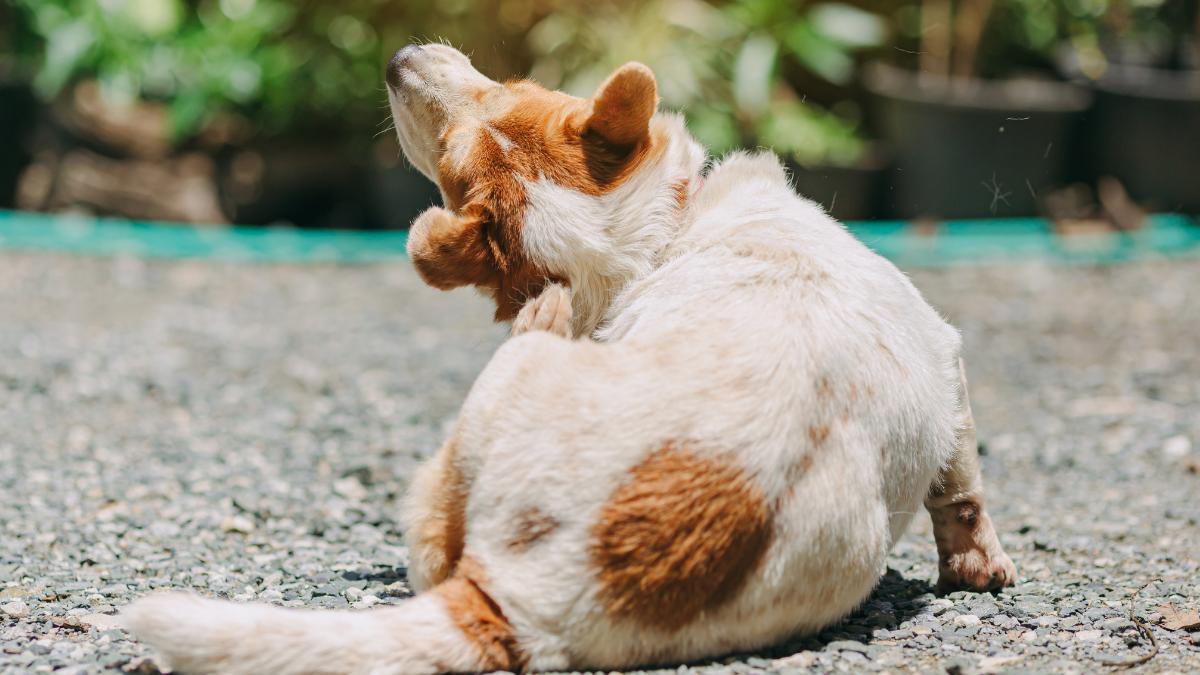
August is Itchy Dog Awareness Month and while dogs are known to scratch here and there, if their routine includes a lot more scratching, there could be a reason for the itch. Frequent scratching — along with things like scooting, excessive chewing or biting, or redness of the skin — are symptoms of skin conditions that may need medical treatment. Not only is itching an annoyance for dogs, but it can also be painful (such as pain from raw sores when moving or a prickly, crawling feeling on the skin), and lead to additional problems when left untreated.
Fleas.
Not only do fleas cause intense itchiness in dogs, but some dogs have an allergy to flea bites and saliva, which can cause severely inflamed and itchy skin, hair loss, scabs, and discomfort. Protect your dog from fleas by ensuring they’re on a preventative medication year-round.
Environmental allergy.
Your dog may be allergic to pollen, dust mites, mold spores, grasses, and a whole host of other common environmental allergens. You might see your dog licking their paws, rubbing their face or shaking their head after time outside, along with scratching, rubbing and hair loss on their legs, sides, and belly. Paw licking often causes brown staining and redness on the tops and bottoms of the paws. The inner ear flaps and outer ear canals can look red and irritated, and there may be a brownish ear discharge.
Food allergy.
When your dog is allergic to their food (or even their treats), they may show this allergic reaction by itching their face, ears, belly, armpits, feet and scooting or licking their rear end. Ear irritation and infections are common with food allergies, too. Some affected dogs may also have digestive issues, like gas, increased number of bowel movements, or loose stools. Food allergies are typically a result of the protein(s) in their food or treats, not the grains—so going “grain-free” isn’t often the answer.
Hot spots.
These raw, inflamed areas often develop due to allergies or fleas. They can also happen after bathing or swimming, especially if the area wasn’t properly dried. Constant scratching or chewing can cause an imbalance in the bacterial levels on their skin, leading to secondary staph infection, which can show as open sores, red bumps, pimples, scabs, and oozing discharge.
Yeast infections.
When a dog has a yeast infection, their skin is often greasy, red, or thickened (“elephant skin”), and has an odor. Folded areas in the ears, on the face, neck, armpits, groin and under the tail are most commonly affected. Yeast infections most often are secondary to allergies, and they are extremely itchy and uncomfortable for your dog.
Staph bacterial infections.
These usually occur when your dog has already been scratching an area to the point of inflammation and skin damage, inviting bacteria to multiply and cause an infection. Signs of a staph bacterial infection include persistent itching, skin redness, crusts/scabs, rash, or pimples. Staph infections in dogs most often are secondary to allergies or parasites but can also occur in dogs with hormonal imbalances.



